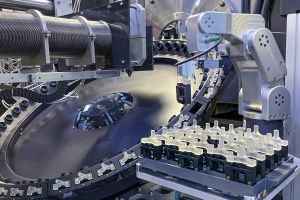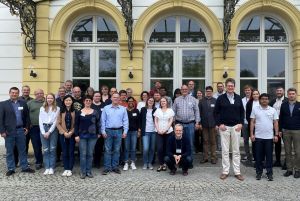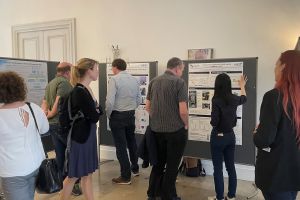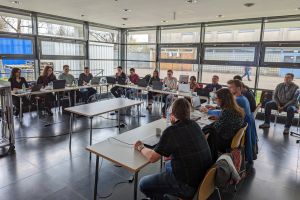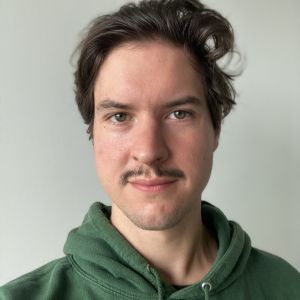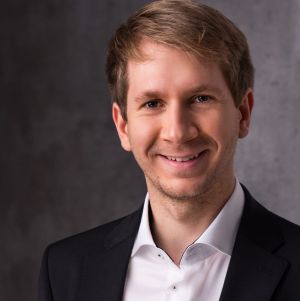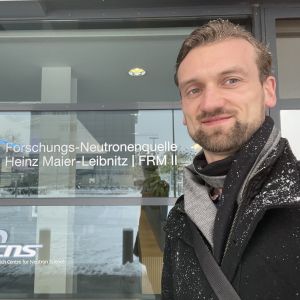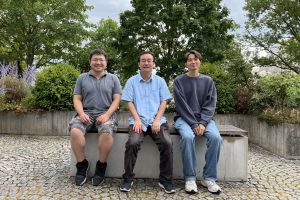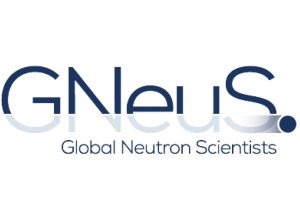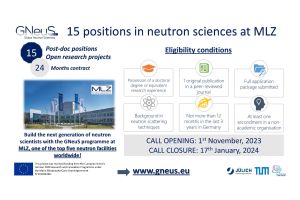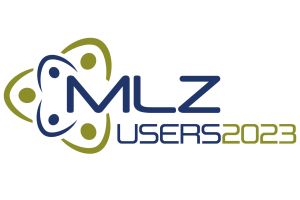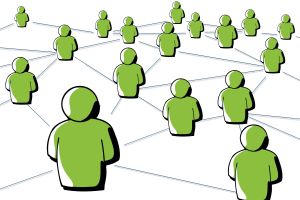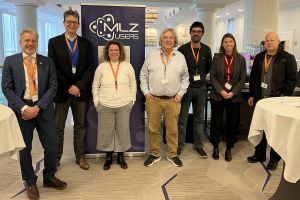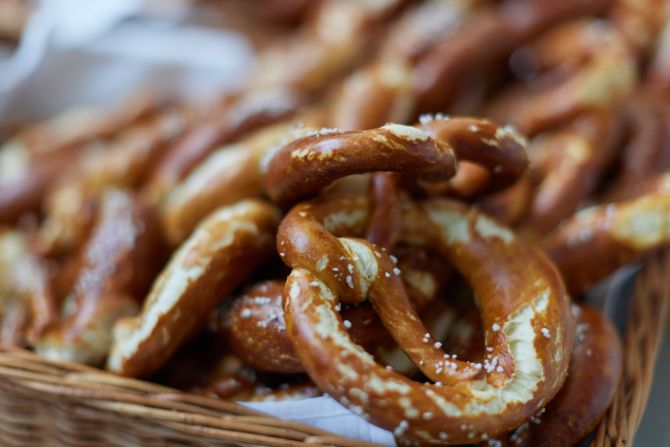MLZ is a cooperation between:
 > Technische Universität München
> Technische Universität München > Helmholtz-Zentrum Hereon
> Helmholtz-Zentrum Hereon
 > Forschungszentrum Jülich
> Forschungszentrum Jülich
MLZ is a member of:
 > LENS
> LENS > ERF-AISBL
> ERF-AISBL
MLZ on social media:

MLZ (eng)
Lichtenbergstr.1
85748 Garching
Newsletter I/2023
Jump directly to the chapters! (and don't forget to enlarge the pictures by clicking them!)
» Editorial» Digitalization etc.» Events» People» UsersEditorial
Looking forward
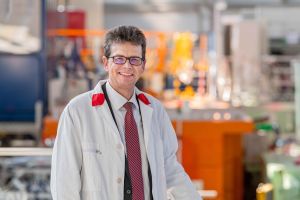
Editorial by Prof. Dr. Peter Müller-Buschbaum (Scientific Director FRM II/ Scientific Director & spokesperson MLZ) © A. Heddergott/ TUM
Dear users of the MLZ,
We miss you and we know that the difficult time without neutrons in Garching puts a great burden on our German and international user community. Thus, coming back to normal operation is our key mission on which we are working hard, and finally, solving the technical issues with our reactor operation is on the right track. As of today, we expect to have the neutrons back mid of 2024.
Meanwhile, we achieved quite some progress for the long-term future of the FRM II. An agreement was found for the conversion of our fuel to lower enrichment. In order to be prepared for the near future, we received fresh fuel elements from our French supplier in mid-July. The replacement of our cold source, however, will still take some more time. The restart of the FRM II next year will therefore provide thermal, hot, and fast neutrons in addition to the powerful positron beams. The beam intensity at our cold instruments will be limited, but all instruments will be in operation. At this time, we also expect the first neutrons at our new instruments in the Neutron Guide Hall East.
Regarding our current instrument suite, we are aiming for a substantial upgrade program, named MORIS (MLZ Organized Refurbishment of the Instrument Suite). We have worked on this upgrade proposal for about one year now, delivered insight at the last User Meeting, and discussed the science case for this major investment with user groups in April 2023. Further details will be reported in upcoming MLZ Newsletters as well as at our next User Meeting, taking place again in Munich from December 4th to 5th. We are looking forward to seeing you there.
Digitalization etc.
» Machine learning tool assists TAS users» Digital twins for education and training
» KWS-2 goes robotics
Machine learning tool assists TAS users
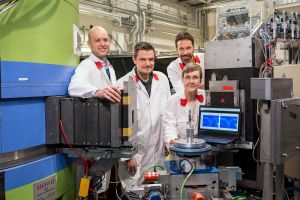
The successful team: M. Teixeira Parente, G. Brandl, C. Franz, A. Schneidewind (left to right). © Astrid Eckert, TUM
If users of spectrometers do not know the intensity distribution of an excitation spectrum, they usually go for a Time-Of-Flight (TOF) experiment first. Recently, JCNS researchers have published the machine learning tool ARIANE for the same use case at three axes spectrometers (TAS) as an alternative.
It discovers regions of interest autonomously after an initialization period and provides a quick overview of intensities. On this basis, a further, more detailed experimental strategy can then be determined. Thus, experimenters do not need to start by specifying particular measurement locations in a given Q-E space. This is not only improving the use of valuable beam time but, due to the autonomous mode, also allows users to make better use of their time.
ARIANE communicates with NICOS, the instrument control software running at MLZ, and any other system that implements the corresponding network protocol. The approach was successfully tested both with synthetic test cases as well as with real neutron experiments at PSI and ILL.
Mario Teixeira Parente (JCNS)
Find more on the MLZ website or even better: read the original publication of M. Teixeira Parente et al! !
Digital twins for education and training
In the fast-paced world of science and technology, innovation is constantly reshaping the way we work, learn, and develop new skills. Today, we explore the transformative impact of digital twins, especially focusing on education and training using digital twins for neutron scattering experiments. In Industry 4.0 digital twins refer to the virtual representation of physical assets or processes used in manufacturing and industrial settings and are utilized for optimizing operational efficiency, enhancing product development, and reducing downtime in manufacturing and industrial processes using predictive maintenance.
Digital twins at MLZ
At MLZ, a digital twin is a virtual representation of a neutron-scattering instrument. To simulate experiments with varying input parameters, the digital twin is coupled with the instrument control system of the physical or virtual experiment. Instrument definitions with virtual devices have been developed in parallel to the real setup, to mimic their real-world counterparts, offering a realistic and immersive experience for users. This seamless integration also allows for data reduction and analysis exercises using identical file formats. The data is generated using Monte Carlo simulations, currently using McStas as the simulation backend.
Benefits of digital twins
One of the key benefits of using digital twins in education and training is that it reduces the entry threshold for new users, giving them hands-on experience with performing experiments at large-scale facilities, in a safe environment for learners to experiment, make mistakes, and learn from them without the fear of real-world consequences. This means that even those who have never been in a large-scale facility setting can gain valuable experience through virtual experimentation. For experienced users digital twins utilize the preparation before a real experiment because they can estimate their neutron flux at the sample in advance, get first insights what are their expected results with different settings and/or resolutions, and how much time they need to carry out their experiment including timing for movement.
Get a closer look in the gallery!
Some history...
The potential of digital twins was first presented during the MLZ instrument control workshop at the MLZ user meeting in December 2020 via Zoom. Since then, it has been implemented in an online training system used in the first lab course with the virtual TREFF instrument in January 2021 and has been regularly utilized for lab courses and onboarding new staff. Not only is this technology useful for educational purposes, but it has also been employed for prototyping metadata catalogues and electronic lab notebook integrations as part of the DAPHNE (DAta from PHoton and Neutron Experiments) for the NFDI project.
Stay tuned!
In conclusion, digital twins have proven to be a game-changer in the realm of education and training, offering a realistic and immersive experience for users. With their ability to mimic real experiments and generate the same data, they have become an invaluable tool for both novices and experienced professionals alike. As technology continues to evolve, we can only expect to see further advancements and applications of digital twins in the field of education and beyond.
Christian Felder, Georg Brandl (JCNS)
KWS-2 goes robotics
KWS-2, the SANS diffractometer with its high intensity and extended momentum transfer, is a high throughput instrument dedicated to the study of mesoscopic structures and structural changes during fast kinetic processes in soft condensed matter, chemistry, and biology. Typically, a large number of samples are measured during short experiments at the instrument.
A new versatile in-beam sample positioning system, which includes a multi-position carousel with 48 positions (Quantum Northwest Inc.) and sample temperature control between 5°C and 85°C (allowing different temperatures for cuvette groups), a Meca500 robot arm (Mecademic Inc.), and a pool of sample cuvettes (50 positions), has been commissioned at the sample position.
Advantages
This allows the instrument to be continuously supplied with samples while minimizing sources of error through fully automated sample changing and positioning, and the ability to pool experiments from different user teams when similar experimental conditions are required. The new compact setup is the standard option for routine experiments at the instrument and can be easily removed and precisely repositioned using a zero-point clamping system, which allows for a smooth change of options when more specialized sample environments such as rheometers, stop-flow, or humidity chambers are required.
G. Brandl, A. Weber, V. Ossovyi, S. Staringer, T. Kohnke, H. Kusche, K. Bingöl, A. Nebel, F. Suxdorf, H. Kleines, K. Bussmann, J. Lippertz, A. Thelen, H. Feilbach, S. Mattauch, A. Radulescu, (JCNS); J. Daemen (Forschungszentrum Jülich GmbH)
Do you remember? In our Newsletter I/21, we presented a short movie on how this may look like. Now, it is ready!
Events
» European Conference on Neutron Scattering 2023» MLZ Conference 2023: Neutrons for Biomaterials
» Data evaluation workshops
European Conference on Neutron Scattering 2023
The European Neutron Scattering Association (ENSA) decided to accept the offer of MLZ to host the ECNS 2023 at the beginning of the pandemic. Thus, during the first years of the organization, it was not quite clear if it would be possible to welcome all participants in person. The International Conference on Neutron Scattering (hosted by Argentinian colleagues) for example had to be shifted one year and could also then only be held in a hybrid mode. The MLZ User Office was responsible for the organization and never lost hope in an in-person meeting – and on March 19th, 2023, the dream became true when more than 500 participants from not only European countries gathered for the welcome reception. It was an evening of happy faces and a lot of hugs!
And this was only the start of four days fully packed with 165 talks in 39 sessions – mostly, four were held in parallel. Together with a total of 277 posters, the broadness of neutron scattering was shown impressively. Discussions were lively – not only during the dinner at the famous Hofbräuhaus.
Just click the pictures to enlarge them – once you open one, you can use the arrows in the upper right to navigate.
Thanks to all participants: With your talks, posters, questions, answers, ideas, and exchanges you made this event a unique one!
Ina Lommatzsch (JCNS)
Hint: You find further details as well as the official conference photo in our news!
MLZ Conference 2023: Neutrons for Biomaterials
More than 50 conference participants met at Schloss Fürstenried between May 22nd and 25th to discuss the stand and the perspectives on how neutrons can contribute to the characterization and development of biomaterials. A total of 44 talks provided striking evidence of the broadness and raising importance of this topic.
Numerous applications
The applications of biomaterials are becoming more and more numerous, especially intensifying in medicine and for sustainable solutions: Heinrich Haas from Johannes Gutenberg Universität Mainz highlighted how SAXS/SANS measurements can contribute to the understanding of structural and functional coherencies of nanoparticulate pharmaceutical products like those successfully applied in mRNA nanoparticles for the vaccination against Covid-19.
Paavo Penttilä from Aalto University talked about one of the most renewable sources on earth: wood. What controls the formation of its structure and how does it change with processing, e.g. in aqueous environments? He showed how scattering methods are highly useful to give an answer to these questions by sheding light on the structure of wood cell walls and their moisture interactions.
Networking opportunities
Opportunities for lively exchange were not missing, both during the sessions and the social event. This was favored by the quiet and withdrawn atmosphere of the location which, being also very close to Munich, offered the possibility of an excursion downtown to pay a visit to some of the newly opened sections of the famous Deutsches Museum.
Stefano Pasini (JCNS)
Read also our news article on this conference!
Data evaluation workshops
Since its inception in 2022, our Data Evaluation (DEVA) group has been actively offering support to the MLZ User community and its partner institutes in the evaluation of experimental data.
This year, we launched a series of method-based one-day educational DEVA workshops with the support of MLZ staff, to be held on a yearly basis, each offering insights into a different neutron technique and the related software needed for data analysis. With this concept, we aim for several goals such as training the new generation of neutron scientists, encouraging interdisciplinary partnerships between experienced scientists, and interactive sessions with software providers to obtain users’ feedback for further software development.
Who can participate?
The target audience is thus all students and scientists who are curious to know about a neutron method and applied software tools in a one-day beginner’s level workshop, which includes a few talks and a hands-on tutorial session. The workshops are free and held in Garching. To ensure the quality of the training and interaction, the number of participants is limited to 15.
Neelima Paul (FRM II)
Don’t miss the opportunity linked to the MLZ User Meeting 2023: On Dec 06th, a Rietveld-Workshop and on Dec 07th, a SteCa-Workshop will be offered!
People
» Newly arrived» From Taiwan to Munich: Training in Neutron Scattering
» GNeuS Cofund program
Newly arrived
Milena Jerosch
Hi, my name is Milena and I am the new Chemical Technical Assistant at JCNS since June 2023. Before I started here, I graduated from Dr. Erwin Elhardt School of Chemistry at Munich, majoring in biochemistry. Afterward, I worked in cell and gene therapy under GMP conditions for over a year.
However, my dream was always to work in research and now I am finally here and looking forward to learning new things every day!
Gilles Möhl
After my PhD in electrochemistry at the University of Southampton, I joined the Advanced Materials Group of Ralph Gilles. I work on the mighty Lithium interface. This timeless classic relies on neutrons from FRM II: nanostructures during lithiation + small angle scattering. I like large-scale facilities, but the reactor off during 2/3 of my project dampens my enthusiasm a little bit – I’m hoping for a smooth restart!
The Gilles-Group is very musical – I have been playing in a band with Alexander Mutschke (see below) ever since. No Neutrons I cry – hope it’ll be alright.
Alexander Mutschke
I am a new PostDoc at the Advanced Materials Group. Here I work on the H2Mat project where I investigate several Ni-based superalloys and their behavior upon hydrogen treatment, i.e. hydrogen embrittlement.
I studied chemistry at the TUM and also obtained my PhD here. During my PhD, I investigated the syntheses and structures of new salt-like hydrides. I am looking forward to applying my background in crystallography and hydride chemistry within my PostDoc to learn new things. I am looking also forward to meeting new people and building new collaborations at the MLZ.
If you are interested in some special kind of hydrides: 10.1039/D2SC01861F
Bastian Veltel
I am the new face in the Physics Lab and I joined already in December 2022 – it was a snowy first day as you can see in the picture! Originally, I am from Münster in the northern part of Germany.
At the lab, I support scientists doing experiments for sample analysis and characterization before using them for neutron scattering experiments.
From Taiwan to Munich: Training in Neutron Scattering
Based on a bilateral cooperation between Tamkang University in Taiwan and Forschungszentrum Jülich GmbH, two young scientists, Po-Chun Chang and Yung-Hsiang Tung, have recently joined MLZ for a two-year training program in neutron scattering.
This program is financed by the National Science and Technology Council (NTSC) and the National Synchrotron Radiation Research Center (NSRRC) of Taiwan. Both researchers will be supervised by Yixi Su, a senior scientist at JCNS-MLZ and instrument scientist at DNS. The focus will be on using both elastic and inelastic neutron scattering techniques for the research on quantum materials.
They already participated in a number of neutron and synchrotron X-ray scattering experiments at external large-scale facilities, and quickly became acquainted with advanced scattering methods. They are also involved in the synthesis and characterization of the physical properties of various novel quantum materials using the in-house laboratories at MLZ.
We wish them a very successful stay at MLZ and in the beautiful city of Munich!
Yixi Su (JCNS)
GNeuS Cofund program
After two successful calls for proposals that selected 30 young researchers in neutron science, the GNeuS Cofund program will soon launch its 3rd and last call, opening on 01/11/2023.
The GNeuS Cofund program is an EU MSCA (Marie Skłodowska-Curie Action) co-funded program offering a total of 45 fellowships, each for a typical duration of 24 months. It is specifically created for outstanding researchers who received their PhD or with an equivalent of 4 years FTE research experience. This new generation of neutron researchers will be educated within the GNeuS program to be able to meet future challenges offered by neutron technology and to create a broad, united community of neutron experts embracing all scientific disciplines and neutron techniques, enabling them to take full advantage of world-leading facilities such as the MLZ and the ESS in the future.
The first Fellow started the GNeuS contract on August 1st, 2022, exactly one year ago. Until now, out of the 15 selected Fellows during each Call, 13 of Call N. 1 have already started their projects, and two of Call N. 2 are expected to join by August 2023.
Flavio Carsughi (JCNS)
Meet some GNeuS-colleagues at MLZ in our Newsletter III/2022 and find all details of the program at https://gneus.eu/
Users
» See you in December!» Remarks of the MLZ User Committee
See you in December!
Before everybody will start the summer holidays we like to remind you to register and submit your abstract for the annual MLZ User Meeting 2023! The deadline will be on Sept 15th.
We will meet again at Munich Marriott Hotel this year on Dec 04th-05th for two days full of discussions, talks, and posters! Monday will be dedicated to specialized workshops organized by our Science Groups as always. And in the evening, we will invite you for a nice conference dinner at a typical Bavarian restaurant. On Tuesday, the MLZ Directorate will update you on the current situation at the MLZ. Furthermore, scientific plenary talks and the poster session will make this day.
Find all details at the MLZ Users 2023 webpage, submit your abstract, and register for participation!
Remarks of the MLZ User Committee
I hope you all are having or will have a relaxing summer break. I know that some of you in southern Europe are suffering from a heat wave. Here in the north, we are having very mixed summer weather with swings from heat waves to flooding. The indicators are very present and climate change is real. It points to the urgency in developing new sustainable materials and processes. Here, neutron techniques provide very important tools to develop new solutions. We have already seen examples thereof in terms of e.g. everything from new smart materials and batteries to life sciences including food and pharmaceuticals.
Ongoing works
As we all know the MLZ suffered a setback as the central channel of the FRM II was found to be defective and had to be exchanged. The manufacturing of a new one and the replacement process is a very complex one. The good news is that the whole operation is progressing well and the MLZ scientific users are expected to have neutrons in August/ September 2024. We also note that another neutron reactor source with challenges of different kinds, the NIST Center for Neutron Research (NCNR) in Gaithersburg MD USA, which has been closed down for quite some time, has received permission from the Nuclear Regulatory Commission to restart operations.
Activities at the MLZ
We as a user community have with satisfaction noticed how actively MLZ has been in promoting excellence in science and technology with the help of neutron science. The latest example is the very successful European Conference on Neutron Scattering, ECNS2023 on March 20th-23rd, 2023, that was organized by MLZ. We were 540 participants from all over Europe with some also from Asia, America, and Australia that enjoyed the Bavarian hospitality and excellence in science. Furthermore, MLZ is now launching an ambitious and very forward-looking instrument development program, MORIS, which is taking advantage of the large competence of MLZ instrument scientists. This is a timely effort that allows the MLZ user community to look forward to new and powerful tools in the not-too-distant future.
I hope to see you in Garching in December for the next User Meeting!
I wish you all a wonderful summer,
On behalf of the MLZ User Committee
Tommy Nylander
|
Welcome to the MLZ Newsletter!
The MLZ Newsletter is sent directly to your inbox. All our users are invited to subscribe to it via GhOST!
You aren’t a scientific user but interested? Then just send an email to the MLZ User Office!
MLZ is a cooperation between:
 > Technische Universität München
> Technische Universität München > Helmholtz-Zentrum Hereon
> Helmholtz-Zentrum Hereon
 > Forschungszentrum Jülich
> Forschungszentrum Jülich
MLZ is a member of:
 > LENS
> LENS > ERF-AISBL
> ERF-AISBL
MLZ on social media:









